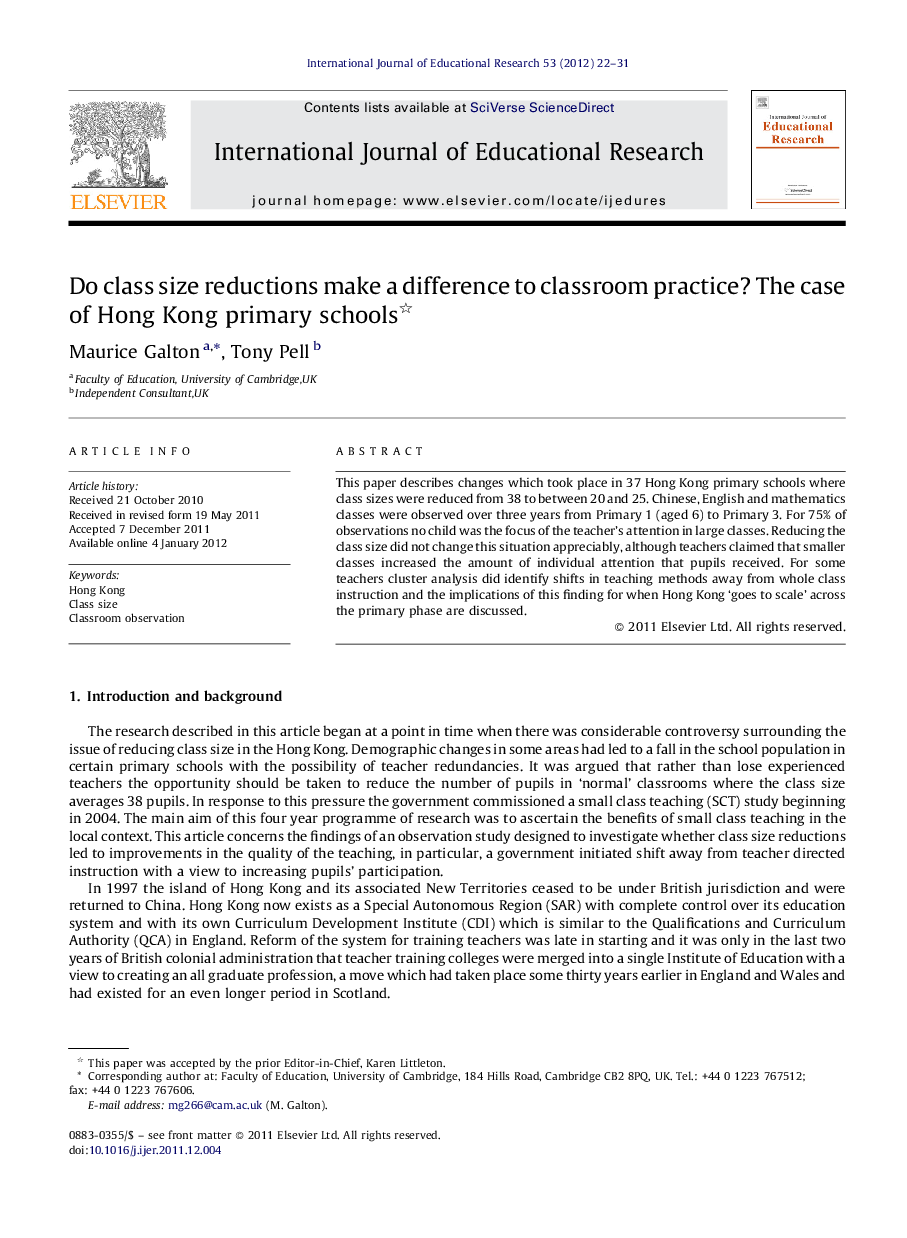| Article ID | Journal | Published Year | Pages | File Type |
|---|---|---|---|---|
| 357011 | International Journal of Educational Research | 2012 | 10 Pages |
This paper describes changes which took place in 37 Hong Kong primary schools where class sizes were reduced from 38 to between 20 and 25. Chinese, English and mathematics classes were observed over three years from Primary 1 (aged 6) to Primary 3. For 75% of observations no child was the focus of the teacher's attention in large classes. Reducing the class size did not change this situation appreciably, although teachers claimed that smaller classes increased the amount of individual attention that pupils received. For some teachers cluster analysis did identify shifts in teaching methods away from whole class instruction and the implications of this finding for when Hong Kong ‘goes to scale’ across the primary phase are discussed.
► In Hong Kong primary classrooms the main teaching method is whole class instruction. ► Individual pupils were the focus of the teachers’ attention for less than 25% of a lesson. ► This percentage increases slightly when class size is reduced from around 38 to between 25 and 20. ► Cluster analysis showed slight shifts away from the dominant class instruction approach. ► Pupil behaviour was similar to that found in English primary classrooms.
